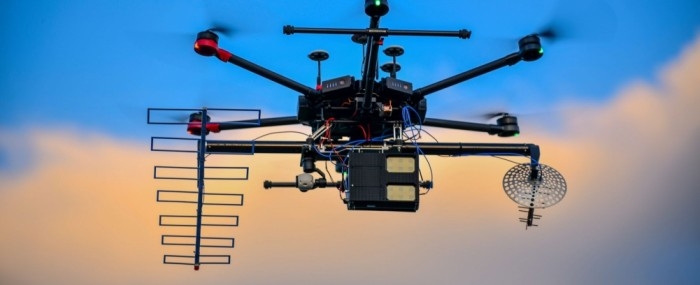


A startup supported by FAPESP developed the technology, which is being tested by pulp and paper manufacturer Klabin (photo: Radaz).
Published on 08/09/2022
FAPESP Innovative R&D* – Klabin, the Brazilian pulp and paper maker, is in the final stages of evaluating a pilot project to test a system that detects ants’ nests with radar carried by an unmanned aerial vehicle (drone).
The main aim of the initiative is to combat nests of leafcutter ants, one of the most destructive insect pests in reforestation projects before and after planting. The radar drone will increase the scope of monitoring, enhance the efficiency of pest control, and boost potential tree growth.
Klabin is partnering with Radaz, a startup that specializes in developing remote sensing radars, with support from FAPESP’s Innovative Research in Small Business Program (PIPE), and with Gian Carlos Oré Huacles, a PhD candidate at the State University of Campinas (UNICAMP) in São Paulo State, Brazil). Huacles is working toward a doctorate in electrical engineering under the supervision of Professor Hugo Figueroa.
The project, which began with the research stage two years ago and advanced to a field pilot test in 2022, consists of a radar installed on a drone that flies over areas of forest or cropland taking images of the subsoil in order to detect ants’ nests. The technology was developed in a project supported by FAPESP and first tested to monitor the growth of sugarcane (more at: https://agencia.fapesp.br/36118).
According to Bruno Afonso Magro, Klabin’s forest research and development manager, the company constantly monitors its forest areas to detect leafcutter nests because of the substantial damage they cause, potentially reducing yield by over 15% if the pest is not controlled.
“Ants’ nests are usually detected by human inspectors in sample areas,” Margo said. “High-tech mechanization is a major advance, particularly with radar that sees below the surface. Our system is fast and has the high resolution required to scan the entire cultivated area. An additional benefit is a reduction in the need for insecticide use.”
The pilot project is underway at Klabin’s commercial plantation in Telêmaco Borba, Paraná State, using synthetic aperture radar (SAR). Different types of flights have been tested, considering changes in the position of the radar on the drone to find out which is the most assertive configuration. Nests have been detected at depths of up to 4 meters, demonstrating the system’s success.
“The drone-borne SAR followed linear and helical flight paths to map different areas of eucalyptus forest,” Huacles said. “It’s possible to obtain subsurface tomographic data using helical trajectories that keep the SAR system over the area of interest as long as possible, and using a low-frequency signal such as P band, which is available in SAR and capable of deep penetration. The data collected by the radar system was processed using an image-oriented deep learning technique. The nest detection rate was 80%, and there were no false alarms.”
From the technical standpoint, the initiative is sophisticated and highly innovative for the forestry sector, Magro explained. “The study demonstrates the feasibility of mapping areas with a SAR system to detect underground nests of leafcutter ants,” he said. “This is the first report of the detection of ants in the subsoil using this technology anywhere in the world.”
Klabin has plantations totaling more than 273,000 hectares with one of the highest international yields for eucalyptus and radiata pine forest.
*With information from Klabin’s communication department.
Source: https://agencia.fapesp.br/39307